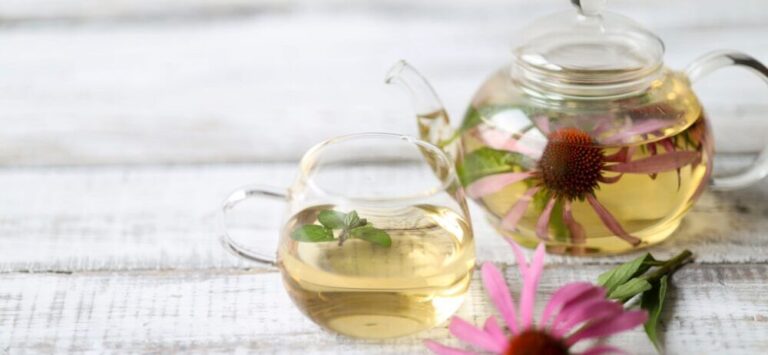Ashwagandha: An Ancient Herb for Modern Times
Ashwagandha: An Ancient Herb for Modern Times
Ashwagandha (Withania somnifera) is an ancient medicinal herb native to India and Africa with over 3000 years of use in African, Ayurvedic, Unani, and indigenous medicine.1 A small shrub with yellow flowers, traditionally the roots of Ashwagandha were used primarily for medicine, and they would be referred to as “Indian Ginseng” in reference to similar rejuvenating properties to other Ginseng species. It has been classified as a “rasayana” in Ayurveda, referring to a remedy that is used to maintain optimal health, ease the effects of aging, and act as a strengthening tonic especially during convalescence. In this way Ashwagandha would be given daily to support health and healing, and it would be given to children, adults, and the elderly for cases of debility and fatigue, especially when recovering from illness. Much as adaptogens are used in a modern sense, rasayana herbs are considered particularly helpful to promote restful sleep, reduce anxiety, increase energy and cognition, and support the ability of the body to the cope with the damaging effects of stress and disease.2
Learn more about the major therapeutic activity of Ashwagandha.
Constituents and Mechanism of Action
Studies across biological models have helped elucidate signaling pathways linked to Ashwagandha and its physiological effects. More than 12 alkaloids, 50 withanolides, and other important flavonoids have been isolated and reported, with the root considered to be richest in steroidal compounds (withanolides), often regarded as key markers of both quality and therapeutic benefit.3,4 Both aqueous and alcohol extracts have demonstrated therapeutic effects in clinical and preclinical studies, and it is likely that synergy of plant constituents present is crucial to overall effects. However, two major withanolides – withaferin-A and withanolide-A – are likely of importance and have also been shown to have rapid absorption after oral administration in animal models.5
Though the precise mechanism of action has yet to be fully elucidated, in vitro studies using methanolic extract of the root have demonstrated GABA-mimetic activity of withanolides indicating a possible rationale for its role in the treatment of disorders associated with GABA-ergic signaling dysfunction such as general anxiety disorders, sleep disturbances, and muscle spasms. It is likely that significant glucocorticoid-like tonic and adaptogenic effects may result from the complex of the many steroidal withanolides found in the root, helping with “pre-conditioning” the adaptive stress response and affecting multiple mediators of the neuroendocrine–immune system including growth factors, antioxidants, and heat shock proteins involved in stress‐induced responses and the body’s innate and adaptive defense mechanisms.6
Therapeutic Use
Traditionally Ashwagandha has many uses due to its ability to increase the body’s resistance to stress and overall rejuvenating effects. Major indications, however, would be aphrodisiac, anti-inflammatory, anti-rheumatic, insomnia, nervousness/anxiety, indigestion, and in various types of infection.7 Over the past few decades many human and animal studies have confirmed these traditional uses while revealing novel applications ideal for addressing “diseases of the modern age” such as chronic stress, cancer, infertility, and metabolic syndrome.
Anti-inflammatory and Immunomodulatory
Ashwagandha has exhibited marked anti-inflammatory effects in various disease models (e.g. arthritis) and like other adaptogens is considered an immune modulator which can alter immune function through the dynamic regulation of inflammatory cytokines.8-10 Adaptogens such as Ashwagandha can aid the body in its ability to maintain homeostasis when faced with noxious stimuli such as infectious organisms through the modulation of T cell immunity, as well as genetic and transcription factors associated with tumor development and progression, giving them significance as adjuvant or supportive therapies in cancer treatment.11-14 Studies in humans have found that oral supplementation of Ashwagandha root decreased C-reactive Protein compared to a placebo, increased the population of CD4+ T cells and activation of natural killer cells, significantly suppressed LPS-induced production of pro-inflammatory cytokines TNF-a, IL-1b, and IL-12 in healthy individuals and those with rheumatoid arthritis, and improved the life status of both neuroblastoma patients post-surgery and laryngeal carcinoma patients (post-radiotherapy).15,16
Cardiometabolic Support
Ashwagandha can help address the cluster of conditions that occur together in metabolic syndrome (e.g. high blood sugar/cholesterol and excess body fat), thus improving risk factors for cardiovascular disease and aiding with weight management, particularly in adults under chronic stress.17,18 It has been shown to possess cardiotropic and cardioprotective properties in animal models, activate nuclear factor-erythroid-2-related transcription factor (Nrf2), stimulate phase-II detoxification enzymes, and protect cardiomyocytes against oxidative damage.19-22 In a study in hypercholesterolemic patients, Ashwagandha was shown to significantly decrease serum total cholesterol, triglycerides, low-density lipoprotein (LDL) and very low-density lipoprotein (VLDL) cholesterol compared to baseline values.23 It has ancient use in the management of diabetes mellitus (DM), and a 2020 systematic review and meta-analysis which evaluated the efficacy, safety, and tolerability of Ashwagandha in managing DM found that it significantly restored altered levels of blood glucose, HbA1c, insulin, lipid profile, serum, and oxidative stress markers with no safety concerns.24
Sleep, Stress, and Anxiety
Ashwagandha is a well-recognized adaptogen known for helping to reduce stress and anxiety. Under chronic stress it has been shown to reduce perceived stress, anxiety, and serum cortisol levels, and significantly improve well-being.25 Its species name “somnifera” is a Latin word meaning “sleep-inducer,” indicating its reputation for relaxing effects observed over centuries of use. Ashwagandha should not, however, be considered strictly sedating. Instead, its adaptogenic activity is more apt to improve sleep patterns and parameters over time and are likewise likely to improve mood, energy levels, and mental and physical stamina. In a 2019 randomized control trial (RCT) a root extract taken twice daily was shown to improve sleep quality and sleep onset latency in patients with insomnia and anxiety, and a 2014 systematic review concluded that Ashwagandha resulted in greater score improvements than placebo in outcomes on both anxiety and stress scales.26,27 Another RCT showed that Ashwagandha reduced anxiety in patients diagnosed with generalized anxiety disorder over six weeks, and when combined with a multivitamin over 12 weeks it produced a greater decrease in anxiety when compared to psychotherapy and a placebo, as well improving concentration and having less fatigue.28,29 It has also been shown to normalize neurotransmitters and restore antioxidants in the cortex of sleep deprived rats and to significantly improve cancer-related fatigue in humans along with quality of life.30,31
Neuroprotective and Cognitive Support
Many studies have documented the neuroprotective effects of Ashwagandha, in particular its potential role in neurogenerative diseases such as Parkinson’s and Alzheimer’s.32,33 There is also evidence to suggest that it may have efficacy in the treatment of psychiatric disorders, including schizophrenia, particularly when associated with symptoms of depression and anxiety.34 Often given to support memory and cognition, a 2020 systematic review evaluated the clinical evidence to support the role of Ashwagandha in managing cognitive dysfunction, and concluded that in most instances it improved performance on cognitive tasks, executive function, attention, and reaction time, while being well tolerated and with minimal side effects.35 Standardized extracts have demonstrated neuromodulatory effects both in vitro and animal models, including:
- Reduced oxidative damage
- Enhanced expression of proteins responsible for growth, differentiation, and communication of neural cells
- Potential to modulate neurotrophic factors, cytoskeletal elements, cell adhesion molecules and synaptic proteins36
Reproductive Health and Fertility Support
Traditionally used to promote fertility and libido, studies have now shown an ability to enhance fertility in men, improving semen quality and serum cortisol levels in infertile males.37 A 2019 RCT, which investigated the effect of Ashwagandha in aging men, found that intake was associated with an 18 percent greater increase in DHEA-S and 14.7 percent greater increase in testosterone compared to the placebo over eight weeks.38 Another 2018 systemic review of therapeutic effects on the reproductive system found that Ashwagandha improved fertility among males and reproductive function in a myriad of ways, including enhancement in semen quality, spermatogenesis, and improved luteinizing hormone and follicular stimulating hormone balance leading to folliculogenesis and increased gonadal weight.39 Two other trials which have assessed the effect of Ashwagandha in male infertility both found similarly positive results with significantly improved sperm quality, improved semen antioxidant parameters, and increased serum luteinizing hormone and testosterone after 3 months.40 Additionally, both morning and afternoon serum cortisol levels significantly decreased from baseline values.41
Conclusions
Ashwagandha is an herb with extensive clinical applications and a rich history of great therapeutic value to the modern clinician. Therapeutic dosing between three and eight grams per day standardized to its withanolide content (approximately 30 mg withanolides per day), are considered safe and well tolerated, with few adverse effects expected. Large doses may cause mild transient gastrointestinal upset, and one case study of thyrotoxicosis attributed to Ashwagandha has been reported.42 Most clinical trials show beneficial effects when taken over two to three months and up to one year, indicating a particular benefit when taken long-term.
- Mirjalili, M. et al. (2009). Steroidal lactones from Withania somnifera, an ancient plant for novel medicine. Molecules, 14(7), 2373-2393.
- M.Morgan, Major Therapeutic Activity of Withania. Phytotherapists Perspective. No. 138 April 2012
- Mirjalili, M. et al. (2009). Steroidal lactones from Withania somnifera, an ancient plant for novel medicine. Molecules, 14(7), 2373-2393.
- Ganzera, M., Choudhary, M. I., & Khan, I. A. (2003). Quantitative HPLC analysis of withanolides in Withania somnifera. Fitoterapia, 74(1-2), 68-76.
- Patil, D. et al. (2013). Determination of withaferin A and withanolide A in mice plasma using high-performance liquid chromatography-tandem mass spectrometry: application to pharmacokinetics after oral administration of Withania somnifera aqueous extract. Journal of Pharmaceutical and Biomedical Analysis, 80, 203-212.
- Panossian, A. G. et al. (2020). Evolution of the adaptogenic concept from traditional use to medical systems: Pharmacology of stress‐and aging‐related diseases. Medicinal Research Reviews.
- Dar, N. J., Hamid, A., & Ahmad, M. (2015). Pharmacologic overview of Withania somnifera, the Indian ginseng. Cellular and molecular life sciences, 72(23), 4445-4460.
- Sumantran, V. et al (2007) Chondroprotective potential of root extracts of Withania somnifera in osteoarthritis. J Biosci 32:299–307
- Gupta A, Singh S (2014) Evaluation of anti-inflammatory effect of Withania somnifera root on collagen-induced arthritis in rats. Pharm Biol 52:308–320
- Spelman, K., et al. (2006). Modulation of cytokine expression by traditional medicines: a review of herbal immunomodulators. Alternative medicine review : a journal of clinical therapeutic, 11(2), 128–150.
- Malik, F. et al. (2009). Immune modulation and apoptosis induction: Two sides of antitumoural activity of a standardised herbal formulation of Withania somnifera. European journal of cancer (Oxford, England : 1990), 45(8), 1494–1509.
- Palliyaguru, D. L., Singh, S. V., & Kensler, T. W. (2016). Withania somnifera: From prevention to treatment of cancer. Molecular nutrition & food research, 60(6), 1342–1353.
- Kaileh, M. et al. (2007) Withaferin a strongly elicits IkappaB kinase beta hyperphosphorylation concomitant with potent inhibition of its kinase activity. J Biol Chem 282:4253–4264
- Kaur, P., et al. (2017). Immunopotentiating significance of conventionally used plant adaptogens as modulators in biochemical and molecular signalling pathways in cell mediated processes. Biomedicine & pharmacotherapy = Biomedecine & pharmacotherapie, 95, 1815–1829.
- Wankhede, S et al.. (2015). Examining the effect of Withania somnifera supplementation on muscle strength and recovery: a randomized controlled trial. J Int Soc Sports Nutr., 25;12:43
- M.Morgan, Major Therapeutic Activity of Withania. Phytotherapists Perspective. No. 138 April 2012.
- Wankhede, S. et al. (2015). Examining the effect of Withania somnifera supplementation on muscle strength and recovery: a randomized controlled trial. Journal of the International Society of Sports Nutrition, 12(1), 43.
- Choudhary, D. et al. (2017). Body Weight Management in Adults Under Chronic Stress Through Treatment With Ashwagandha Root Extract: A Double-Blind, Randomized, Placebo-Controlled Trial. Journal of evidence-based complementary & alternative medicine, 22(1), 96–106.
- Das, P. et al. (1964) Cardiotonic activity of Ashwagandhine and Ashwagandhinine, two alkaloids from Withania ashwagandha, Kaul. Arch Int Pharmacodyn Ther 150:356–362.
- Ojha SK, Arya DS (2009) Withania somnifera Dunal (Ashwagandha): a promising remedy for cardiovascular diseases. World J Med Sci 4:156–158
- Reuland, D. et al (2013) Upregulation of phase II enzymes through phytochemical activation of Nrf2 protects cardiomyocytes against oxidant stress. Free Radic Biol Med 56:102
- Mathur, R. et al. (2006) Evaluation of the effect of Withania somnifera root extracts on cell cycle and angiogenesis. J Ethnopharmacol 105:336–341
- Andallu, B., & Radhika, B. (2000). Hypoglycemic, diuretic and hypocholesterolemic effect of winter cherry (Withania somnifera, Dunal) root.
- Durg, S., et al. (2020). Withania somnifera (Indian ginseng) in diabetes mellitus: A systematic review and meta-analysis of scientific evidence from experimental research to clinical application. Phytotherapy research : PTR, 34(5), 1041–1059.
- Chandrasekhar K, Kapoor J, Anishetty S (2012) A prospective, randomized double-blind, placebo-controlled study of safety and efficacy of a high-concentration full-spectrum extract of ashwagandha root in reducing stress and anxiety in adults. Indian J Psychol Med 34:255–262
- Langade, D. et al. (2019). Efficacy and safety of Ashwagandha (Withania somnifera) root extract in insomnia and anxiety: a double-blind, randomized, placebo-controlled study. Cureus, 11(9).
- Pratte, M. A.et al. (2014). An alternative treatment for anxiety: a systematic review of human trial results reported for the Ayurvedic herb ashwagandha (Withania somnifera). Journal of alternative and complementary medicine (New York, N.Y.), 20(12), 901–908.
- Andrade, C. et al. (2000). A double-blind, placebo-controlled evaluation of the anxiolytic efficacy ff an ethanolic extract of withania somnifera. Indian journal of psychiatry, 42(3), 295.
- Cooley, K. et al. (2009). Naturopathic care for anxiety: a randomized controlled trial ISRCTN78958974. PLoS One, 4(8), e6628.
- Suganya, K. et al (2020). Effect of Withania Somnifera on the antioxidant and neurotransmitter status in sleep deprivation induced Wistar rats. Bioinformation, 16(8), 631.
- Biswal, B. et al. (2013). Effect of Withania somnifera (Ashwagandha) on the development of chemotherapy-induced fatigue and quality of life in breast cancer patients. Integrative cancer therapies, 12(4), 312–322.
- Kuboyama, T. et al. (2014). Effects of Ashwagandha (roots of Withania somnifera) on neurodegenerative diseases. Biological & pharmaceutical bulletin, 37(6), 892–897.
- Sankar, S. et al. (2007) The neuroprotective effect of Withania somnifera root extract in MPTP-intoxicated mice: an analysis of behavioral and biochemical variables. Cell Mol Biol Lett 12:473–481
- Gannon, J. et al. (2019). Effects of a standardized extract of Withania somnifera (Ashwagandha) on depression and anxiety symptoms in persons with schizophrenia participating in a randomized, placebo-controlled clinical trial. Annals of clinical psychiatry : official journal of the American Academy of Clinical Psychiatrists, 31(2), 123–129.
- Ng, Q. et al (2020). A systematic review of the clinical use of Withania somnifera (Ashwagandha) to ameliorate cognitive dysfunction. Phytotherapy research : PTR, 34(3), 583–590
- Yenisetti, S. et al. (2016). Neuropharmacological Properties of Withania somnifera – Indian Ginseng: An Overview on Experimental Evidence with Emphasis on Clinical Trials and Patents. Recent patents on CNS drug discovery, 10(2), 204–215.
- Udupa, K. N., & Singh, R. H. (1993). Clinical and experimental studies on rasayana drugs and pancakarma therapy. Central Council for Research in Ayurveda and Siddha.
- Lopresti, A. et al. (2019). A Randomized, Double-Blind, Placebo-Controlled, Crossover Study Examining the Hormonal and Vitality Effects of Ashwagandha ( Withania somnifera) in Aging, Overweight Males. American journal of men’s health, 13(2), 1557988319835985.
- Nasimi Doost Azgomi, R. et al. (2018). Effects of Withania somnifera on Reproductive System: A Systematic Review of the Available Evidence. BioMed research international, 2018, 4076430.
- Mahdi, A. et al. (2011). Withania somnifera improves semen quality in stress-related male fertility. Evidence-Based Complementary and Alternative Medicine, 2011.
- Ahmad, M.et al. (2010). Withania somnifera improves semen quality by regulating reproductive hormone levels and oxidative stress in seminal plasma of infertile males. Fertility and sterility, 94(3), 989-996.
- van der Hooft, C. S. et al. (2005). Thyreotoxicose na gebruik van Ashwagandha [Thyrotoxicosis following the use of ashwagandha]. Nederlands tijdschrift voor geneeskunde, 149(47), 2637–2638.







